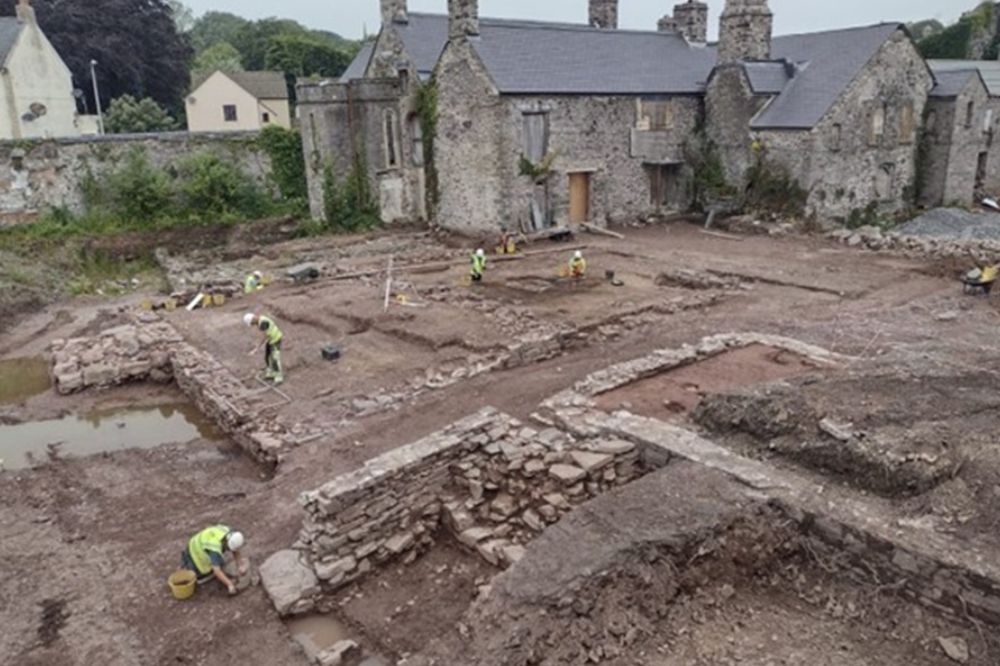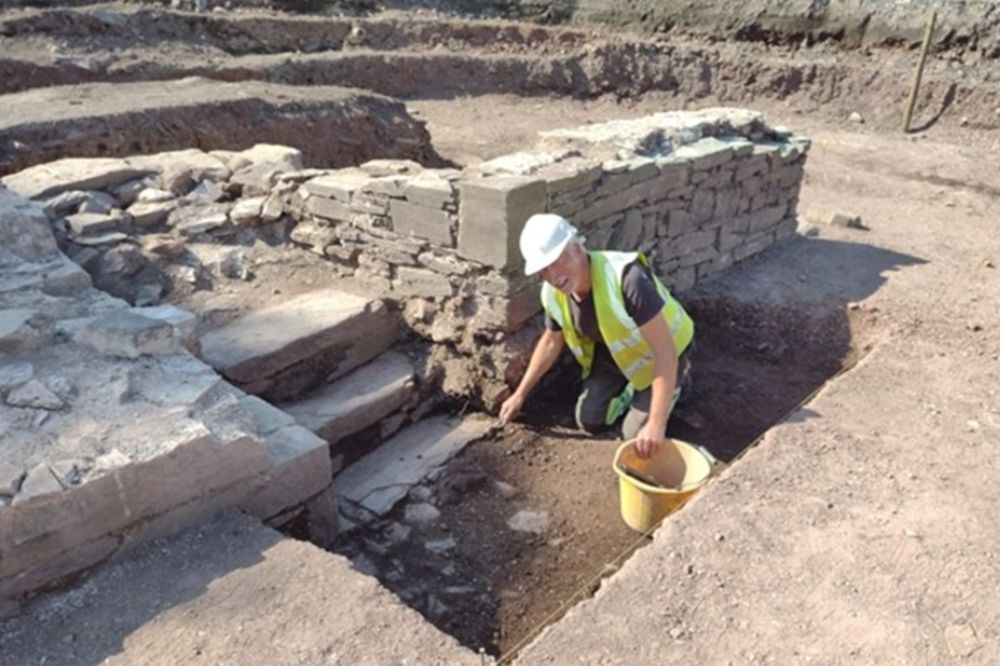Medieval quay discovered by archaeologists in shadow of Welsh castle

Emily Price
A medieval quay discovered by archaeologists in the shadow of a Welsh castle is the first of its kind to be found in Wales.
The site was discovered at Island House in Laugharne, Carmarthenshire – a 16th century Grade 11* listed house.
It was purchased by Island House Restoration Ltd in March 2020 with the aim to restore the building to its original condition and convert it into a hotel, bar and restaurant.
Island House itself has roof timbers dating back to 1437 AD – based on tree ring dating (dendrochronology) and radiocarbon dating.
In 2020, during an earlier excavation, archaeologists revealed stratified medieval archaeology which included evidence of a water course that had been used as a midden – essentially a medieval refuse channel – by Laugharne Castle and town from the 12th century.
‘Unexpected’
Heneb – the Trust for Welsh Archaeology – has subsequently discovered later buildings next to a medieval quay.
The dig is being sponsored as part of the restoration of Island House by Philip Bond and Stephen Kirkwood of Island House Restoration Ltd.
The quay would have been on a small tidal inlet just outside the medieval town walls and in the shadow of Laugharne Castle.

The castle still dominates the town, but the tidal inlet has long since silted up and is now a car park.
The first quay was built in the twelfth or thirteenth century. The inlet slowly silted up, so quay walls were built further and further out into the inlet.
Eventually in the seventeenth century boats could no longer get to the quay.
Archaeologists also uncovered stone buildings that stood on the quayside, one of which was a large, high status hall house.
It would have had a central fireplace, the smoke from which would have found its way out through the high roof.
Experts believe it was probably the home of a wealthy merchant profiting from the coastal trade.
The pottery found during the excavation shows that extensive trade routes ran from Bristol, the French coast and as far south as Spain.
History
Ken Murphy, supervising the dig for Heneb, said: “We knew that Island House had an interesting history, but the discovery of a quay was unexpected.
“Medieval quays have already been excavated in large UK ports, such as London
and Bristol.
“To find one in Laugharne was quite a surprise.
“It makes us re-evaluate the importance of Laugharne within the trading network of the British Isles in the Middle Ages.
“It also emphasises the importance of sea trade in the past.”
“Medieval quays have already been excavated in large UK ports, such as London
and Bristol.
“To find one in Laugharne was quite a surprise.
“It makes us re-evaluate the importance of Laugharne within the trading network of the British Isles in the Middle Ages.
“It also emphasises the importance of sea trade in the past.”
‘Exciting’
Stephen Kirkwood said: “We are trying to find out as much as possible about the history of Island House.
“The archaeological discoveries are very exciting.
“They will complement historical research and other investigations we have commissioned.
“We have always been fascinated by Island House and took the opportunity to buy it over five years ago with the aim of making it into a small hotel.
“It was in very poor condition when we bought it and was in danger of falling down.
“It is now safe, and the building work is progressing well. One of the things we are thinking about is how we can preserve and display the important archaeological discoveries for the enjoyment of future visitors.”
Heneb will continue to work at the site and a series of open days are planned for the public to come and view the discovery.
Dr Carol Bell, Chair of Heneb, said: “What Ken and the Heneb team have discovered at this site is remarkable. It is easy to picture how busy this medieval quay would have been, with small boats coming and going to the quayside.
“Furthermore, it underlines the importance of Laugharne as a port during this period.
“The discoveries add significantly not only to our understanding of Medieval Wales but also about Laugharne’s place in extensive trading networks to other parts of Britain and beyond, I would like to pay particular tribute to the owners of Island House for their support and vision.
“Their passion and interest have enabled Heneb’s team of highly skilled
archaeologists to reveal more about the maritime past of this part of Wales.”
Support our Nation today
For the price of a cup of coffee a month you can help us create an independent, not-for-profit, national news service for the people of Wales, by the people of Wales.





Fascinating piece of history.
Ooh how interesting, I hope they manage to preserve it ( maybe even get permission to reinstate some of the quay ).
How do we the public go about visiting ?
Inlets such as Laugharne would have been part of the Atlantic Arc (the Celtic trading routes from Galicia through Brittany and Cornwall to ourselves, Ireland, Isle of Mann and Scotland). Oh, for those now!
Just totally awesome. A fantastic find. I had the pleasure of meeting the Owner prior to Island House being sold after his death. He was an eloquent fascinating character. Well Done to all involved on this project 👏👏👏